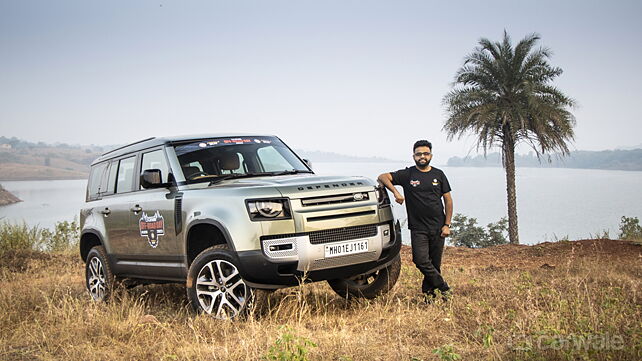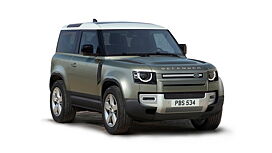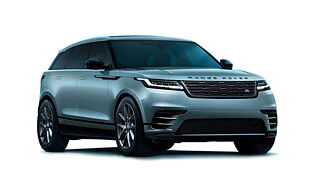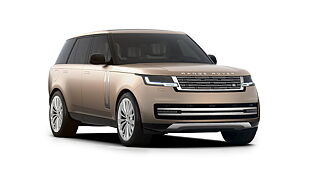Introduction
Specifications
Tyre Size and Brand - 255/60 R20 Goodyear Wrangler All-Terrain
Ground Clearance - 218mm (+70mm in off-road ride height)
Off-Road Hardware - Permanent four-wheel drive, low-range gearbox, central differential, air suspension with adjustable ride height, multiple off-road driving modes

The original Land Rover Defender made its name in the world of off-roading in the 80s and the 90s as a plucky little go-anywhere vehicle. What you see here is an icon reimagined for the 21st century. It’s a genuine, albeit properly sophisticated descendant of the OG Defender with permanent four-wheel drive, central differential, air suspension with adjustable ride height, and Land Rover’s Terrain Response System to make off-roading easier. This particular Defender is powered by a 2-litre, turbocharged petrol engine that makes 296bhp of power and 400Nm of torque. It runs on 255/60 section 20-inch chunky tyres and has a ground clearance of 218mm, although that can be raised by an additional 70mm in the off-road ride height setting.

It would have been morally wrong to not have the Defender for this year’s CarWale Off-Road Day. So, there you have it. Hoarding a good chunk of space next to a bunch of 4x4s with various degrees of off-road potential, the Defender pompously maintained its potent mix of new-world luxury and old-school charm.

CarWale Off-Road Day Tests Explained

Before we move any further, let me run you through how we test all the cars and what was different for this year. Firstly, there’s the acceleration test, which we measure not through speed but distance – it’s about how quickly the vehicle can cover a distance of 40m from a standstill. Here, we will get to see how well the vehicle’s 4x4 system manages traction off the line over loose gravel.

Next up, we have a slalom test in which the car goes around a series of cones placed at an equidistance. The vehicle that takes the least amount of time to get to the other end without touching any cone is the winner and that is possible only if it has a good front-end grip and the ability to change directions quickly.

Then, there’s the dreaded beaker test, which is all about testing the vehicle’s ability to deliver a flat ride when driving over heavy undulations and big humps. A beaker full of water decides how good the ride quality is. The lesser the water spills, the higher the car's score.

The newcomer for this year was the hill descent test wherein the slowest car to roll down a steep hill wins the test, although let me tell you, it is nowhere as simple as it sounds. It’s the ultimate test of these off-roaders and their ability to slowly come down a slippery hill without losing traction.

Finally, for the timed lap test, we designed our very own circuit in the dirt across which we drove the cars against the clock. Pretty much everything will matter here, be it the engine performance, responsiveness of the gearbox and the ESP, grip of the tyres, or the 4x4 system, of course.
How the Land Rover Defender Performed
The Defender looks like it's built only for adventures. It’s got enormous tyres, the most amount of ground clearance here and by a big margin, and a sophisticated traction management system. It felt completely at home across the vast off-road expanse and made it back without any issues after three days of pretty intense off-roading. But it’s the ease with which the Defender finished all the tests is something that few cars can deliver.
Hill Descent Test

The Land Rover Defender won our hill descent test by a gap as big as the one between its wheels and the body when you lift it – it took 12 seconds longer than the next best car, the G-Wagon.
| Land Rover Defender | 41.97 seconds |
| Mercedes-Benz G-Class | 29.50 seconds |
| Toyota Hilux | 18.59 seconds |
| Mahindra Thar | 17.69 seconds |
| Maruti Suzuki Jimny | 15.16 seconds |
| MG Gloster | 14.00 seconds |
Acceleration Test

In the 0-40m acceleration test, the Defender was one of the fastest cars amongst this bunch despite lacking a torquey diesel engine. It did well because the traction management on the Defender is that good – it’s got a low traction launch mode that allows you to pull away quickly and the 4x4 system is constantly working to find traction over loose terrain once you get going.
| Mercedes-Benz G-Class | 4.47 seconds |
| Land Rover Defender | 4.50 seconds |
| Maruti Suzuki Jimny | 4.50 seconds |
| Toyota Hilux | 4.84 seconds |
| Mahindra Thar | 5.06 seconds |
| MG Gloster | 5.09 seconds |
The Slalom Test

Now, twisting one’s way across the cones through a slalom course is great fun but things get tricky as soon as you cross the first cone where the surface is uneven and full of dirt. The steering wheel on the Defender is unusually large and if I am honest, I was intimated by its size initially. However, to my surprise, it proved to be quite agile – the front end would grip instantly, it would cleanly follow the line, and overall it was a lot of fun to drive fast in our slalom test. It was just as quick as the G Wagon which had a clear torque advantage.
| Mercedes-Benz G-Class | 13.53 seconds |
| Maruti Suzuki Jimny | 13.93 seconds |
| Land Rover Defender | 13.97 seconds |
| Mahindra Thar | 14.19 seconds |
| Toyota Hilux | 15.53 seconds |
| MG Gloster | 16.00 seconds |
The Beaker Test

The Defender did well in our beaker test, too, and I am glad it did because let me tell you honestly, it is my least favorite test every time we do this, for obvious reasons! So we had a beaker (filled to the brim with water) inside the car and as soon as Vikrant decided to go pedal to the metal, it began sloshing over the edges, which showed us how good (or bad) the suspension was over uneven surfaces. For this test, we scouted out a short route at our venue that allowed us to take the Defender across deep ruts, rocky terrain, and a few choppy ridges. Thankfully, the Defender soaked up bumpy, uneven terrain just fine so that I didn’t have to soak my pants during the beaker test.
| MG Gloster | 430 ml |
| Land Rover Defender | 420ml |
| Mercedes-Benz G-Class | 390ml |
| Mahindra Thar | 380ml |
| Maruti Suzuki Jimny | 380ml |
| Toyota Hilux | 360ml |
The Timed Lap

Finally, we come to the timed lap section. This is where it gets a little tricky for the Defender. It is, without a shadow of a doubt, an extremely capable off-roader, one with plenty of clever electronics to get you out of slush or rocky terrain. However, during the timed lap, I discovered that its traction control system is simply too conservative when it comes to delivering the engine’s power if there is any sort of steering lock applied over loose terrain. In our timed run, it cut most of the engine’s power whenever we went full throttle in a corner. Ultimately, it reflected on the Defender’s lap time, which was four seconds slower than the fastest car.
| MG Gloster | 51.62 seconds |
| Mercedes-Benz G-Class | 51.72 seconds |
| Land Rover Defender | 55.68 seconds |
| Toyota Hilux | 59.37 seconds |
| Mahindra Thar | 59.40 seconds |
| Maruti Suzuki Jimny | 1 minute 6.60 seconds |
Conclusion

I jumped on the opportunity to drive the Defender for this year’s CarWale Off-Road Day because of two things. Firstly, I was keen to find out if it's possible to take on all the off-road obstacles and go through the day in absolute comfort. Secondly, well, it’s a Defender. I didn’t want to deprive myself of what is truly an automotive icon. All said and done, the Defender didn’t let us down at any point really. It is bang-on as a lifestyle vehicle that you can flaunt, it gets everyone’s attention, and to say that its street presence is imposing is an understatement. Even though it didn’t top the leaderboard, the Defender was truly effortless for the most part.
Pictures by Kaustubh Gandhi and Kapil Angane


































